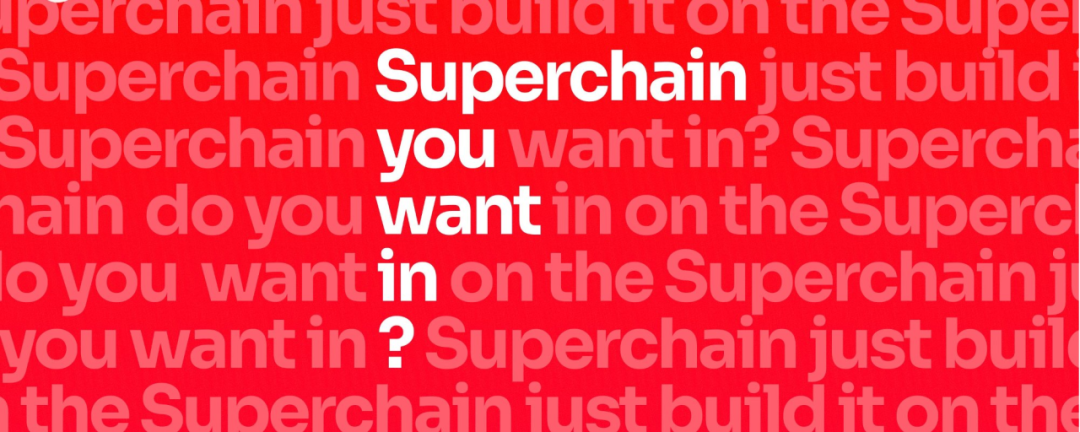
Content & Review | Ethereum Chinese Weekly
Organization & Editing | Connie
Image Source: Internet
"Ethereum Chinese Weekly"
—— Building an Information Bridge for Chinese-speaking Ethereum Community
Introduction to "Ethereum Chinese Weekly"

Every Monday at 2 PM (UTC+8), the Ethereum Chinese Weekly invites renowned project engineers, KOLs, and others from the Web3 industry to share insights on Ethereum industry topics, interpretations of reports from well-known institutions, analyses of new projects, hot topic reviews, and more.
The "Ethereum Chinese Weekly" (hereinafter referred to as "Weekly") gathers the exciting content from the "Ethereum Chinese Weekly Meeting," capturing the latest news and in-depth analyses, continuously delivering fresh and substantial content to you.
The Ethereum Chinese Weekly Meeting and the "Weekly" are jointly initiated by Web3BuidlerTech and ETHPanda, with support from communities like LXDAO.
Together with you, we are building an information bridge for the Chinese-speaking Ethereum community.
Ethereum Chinese Weekly Video
The exciting content of this issue can be accessed via the following links, or click "Read the original text":
Bilibili:
https://www.bilibili.com/video/BV1F3DpYaE3x
YouTube:
https://youtu.be/C-vurra1X3I
Materials for this issue:
https://www.notion.so/web3buidler/Web3BuidlerTech-702bd1ab80a7422586f1edac1917fa9c
Table of Contents
This issue of the "Weekly" consists of 2 parts, taking approximately 10 minutes to read.
- Overview of Industry Information from Last Week
Blockchain News
Data Trends
- In-depth Content Analysis
Vitalik's New Article: Possible Future of the Ethereum Protocol (Part 6) The Splurge
Bankless Interpretation of ETH's Long-term Value Accumulation Mechanism
How OP Superchain Emerged?
a16z: How to Identify Real Users from 220 Million Active Addresses?
Overview of Industry Information from Last Week
(October 28 to November 3)
Blockchain News
- Christine Kim, Vice President of Research at Galaxy, summarized the 145th Ethereum Core Developers Consensus (ACDC) call.
This week, developers discussed the Pectra specification changes they hope to include in Pectra Devnet 5; there were no major issues with Pectra Devnet 4, and the team has implemented various fixes to allow all users to propose blocks on the development network.
PeerDAS Devnet 3 has been closed after a reorganization of 100,000 slots; the team is unlikely to launch a new PeerDAS development network before the Ethereum Developer Conference Devcon concludes.
Learn more:
https://www.galaxy.com/insights/research/ethereum-all-core-developers-consensus-call-145/
- Daniel Lubarov from the Polygon Zero team stated on X that Plonky3 can now process over 2 million Poseidon2 hashes per second. The recent acceleration is mainly related to memory: avoiding copying, skipping zeroing, merging some FFT steps to keep content in cache, etc.
In response, Vitalik Buterin stated: "2 million hash/s = 62 MB/s of Merkling is sufficient to completely re-hash the theoretically maximum size of the Ethereum consensus state within a single slot; now please execute blake3 or sha256." Polygon co-founder Sandeep expressed gratitude for Vitalik's praise of Polygon's ZK contributions and stated they will continue to work hard.
Learn more:
https://x.com/dlubarov/status/1851667100542341155
- The Ethereum Layer 2 network Base, developed by Coinbase, announced on the X platform that fault proof is now live on the Base mainnet, marking an important milestone in Base's journey towards decentralization. With this mechanism introduced, anyone can monitor and challenge invalid withdrawal transactions without permission, eliminating the need for third-party trust.
Learn more:
https://base.mirror.xyz/eOsedW4tm8MU5OhdGK107A9wsn-aU7MAb8f3edgX5Tk
- Messari released the Filecoin Q3 status report, indicating that Filecoin's new storage transaction volume increased by 16% quarter-over-quarter in Q3 2024, with storage utilization rising from 26% in Q2 to nearly 30%, while storage capacity decreased by 18% quarter-over-quarter. As of the end of Q3, over 2,000 users have stored datasets on Filecoin, with 518 users storing large datasets of over 1000 TiB.
Learn more:
https://messari.io/report/state-of-filecoin-q3-2024
- Lido announced the integration of the Chainlink Cross-Chain Interoperability Protocol (CCIP) to enable cross-chain staking for Ethereum L2 networks (such as Arbitrum, Base, and Optimism).
This integration will support Lido's direct staking functionality, allowing users to stake ETH from different blockchain networks and receive wstETH. In addition to staking integration, Lido will also utilize Chainlink's data feeds to determine the redemption rate of wstETH on Ethereum.
Furthermore, Lido will use Chainlink Automation to batch process cross-chain ETH transfers, enhancing liquidity management.
Learn more:
https://blog.lido.fi/lido-staking-goes-cross-chain-via-chainlink-ccip/
- Web3 security researcher jayjonah.eth discovered a serious vulnerability that could cause the Evmos blockchain and all decentralized applications (DApps) built on it to stop functioning by reading Cosmos network documentation, earning a $150,000 bounty.
Security researcher jayjonah.eth explained the concept of "module accounts" encountered in the Cosmos documentation, stating: "If these addresses (module accounts) receive funds outside the expected rules of the state machine, invariants may be violated, potentially causing the network to stop."
Based on the Cosmos documentation, the security researcher conducted crash tests on the Evmos blockchain by attempting to send funds to module accounts in a test environment and reported: "At this point, no blocks are being generated anymore, and the blockchain has completely stopped. This would disrupt the Evmos blockchain and all DApps built on it." He revealed that the Evmos team had already fixed the vulnerability before the information was made public.
Learn more:
https://medium.com/@jjordanjjordan/150-000-evmos-vulnerability-through-reading-documentation-d26328590a7a
Data Trends
- L2BEAT Data (as of November 4, 2024):

- Learn more:
https://l2beat.com/scaling/tvl
According to Pionex, there were 20 hacker attacks in the crypto space in October 2024, resulting in losses of approximately $88.47 million.
Maria Shen, a partner at Electric Capital, released a global crypto developer distribution research report based on an analysis of over 110,000 developer profiles, more than 200,000 crypto-related Git commits, and over 350,000 code repositories, indicating that North America's leading position in cryptocurrency developer share has been surpassed by Asia.
The developer share in North America has sharply declined from 44% in 2015 to 24% in 2024. Meanwhile, Asia's share has risen from 13% to 32%, becoming the leading continent for crypto talent for the first time. By country, the United States ranks first globally with an 18.8% share, followed by India and the United Kingdom with 11.8% and 4.2%, respectively.
Learn more:
https://x.com/MariaShen/status/1851702779946901968
- Crypto analyst Michael Nadeau cited Artemis data indicating that the Ethereum mainnet has seen a net outflow of $6 billion this year, with 83% flowing into L2 networks.
Therefore, year-to-date, Arbitrum has a net inflow of $2.4 billion, Optimism $2.2 billion, and Base $1.6 billion.
Additionally, year-to-date, Solana has received $2.36 billion from Ethereum L1, with over $1 billion flowing back into the Ethereum ecosystem (42%).
Learn more:
https://x.com/JustDeauIt/status/1851993593193337064
- Starknet announced a new record for transaction speed in the Ethereum L2 network, achieving a peak transaction rate (TPS) of 127.5 within 24 hours, with a peak of 857 TPS, far surpassing the previous record of 79.92 TPS set by Coinbase's Layer 2 Base.
This test was conducted by StarkWare, game development company Cartridge, and the Starknet Foundation, simulating large-scale user scenarios. The test game, "flippyflop," involved players competing against robots to flip tiles on a grid, generating a large number of high-frequency simple transactions, validating Starknet's scalability and TPS limits.
Learn more:
https://x.com/Starknet/status/1851499376142926005
In-depth Content Analysis
Vitalik's New Article: Possible Future of the Ethereum Protocol (Part 6) The Splurge

This article covers several key areas of improvement within the Ethereum protocol that are difficult to categorize but are crucial for the future development of Ethereum, collectively referred to as "The Splurge." The key objectives are: to achieve a high-performance and stable "final state" for the EVM; to introduce account abstraction into the protocol, allowing all users to benefit from more secure and convenient accounts; to optimize transaction fee economics, enhance scalability, and reduce risks; and to explore advanced cryptography that can improve Ethereum in the long run.
Read the original text:
https://vitalik.eth.limo/general/2024/10/29/futures6.html
BlockBeats Chinese Translation:
https://www.theblockbeats.info/news/55543
Bankless Interpretation of ETH's Long-term Value Accumulation Mechanism

@RyanSAdams from Bankless tweeted about the long-term value growth model of ETH: the repeated oscillation of the "burn-expand" cycle. During the burn cycle, when the demand for block space exceeds supply, a large amount of ETH is burned, leading to a deflationary state and enhancing its scarcity; during the expansion cycle, Ethereum expands block space, turning ETH into an inflationary asset, while the price of block space decreases, further driving demand growth within the L2 economy. The value accumulation of ETH is driven by these two cycles, with the burn cycle increasing scarcity and the expansion cycle bringing about endogenous demand for ETH. The Ethereum ecosystem is committed to maintaining decentralization, and this demand promotes gradual progress in scaling upgrades. In the long run, as the roadmap is gradually implemented and L2 flourishes, ETH has the potential to be an undervalued investment.
Read the original text:
https://x.com/RyanSAdams/status/1851268032070394059
How OP Superchain Emerged?

This article explores the rise of the Optimism Superchain, which addresses interoperability and resource fragmentation issues by integrating decentralized L2 networks, forming a unified and collaborative ecosystem. With the help of the OP Stack open-source framework, Superchain enhances cross-chain liquidity and user experience while attracting heavyweight applications like Base, Uniswap, and Worldcoin, driving the expansion of network effects. By sharing revenue and implementing open governance, Superchain redefines ecosystem incentive mechanisms, showcasing a new path for L2 expansion and laying the foundation for the future integration and popularization of blockchain ecosystems.
Read the original text:
https://x.com/arndxt_xo/status/1851276977870946808
Chinese Translation:
https://www.panewslab.com/zh/articledetails/1w294lfu.html
a16z: How to Identify Real Users from 220 Million Active Addresses?

a16z explored the estimation of active crypto users in its "2024 Crypto Report," pointing out that relying solely on active addresses is inaccurate, as many addresses may be created as fake identities under mechanisms like airdrop rewards. By analyzing wallet data and filtering out suspected machine addresses, they estimated that the real monthly active users could be between 30 million and 60 million, indicating significant growth potential compared to the approximately 600 million global crypto holders.
Read the original text:
https://a16zcrypto.com/posts/article/estimating-crypto-users/#section--1
Chinese Translation:
https://www.panewslab.com/zh/articledetails/wb0riwy8.html
This concludes the content of this issue of the Ethereum Chinese Weekly. Thank you for reading!
Next Monday at 2 PM (UTC + 8), we look forward to sharing the new issue with you! (Joining details at the end)
Image source: Internet, please delete if infringing.
Co-initiating Communities

Supporting Communities

LXDAO is a research DAO focused on sustainably supporting valuable Web3 public goods and open-source projects.
Join Us


免责声明:本文章仅代表作者个人观点,不代表本平台的立场和观点。本文章仅供信息分享,不构成对任何人的任何投资建议。用户与作者之间的任何争议,与本平台无关。如网页中刊载的文章或图片涉及侵权,请提供相关的权利证明和身份证明发送邮件到support@aicoin.com,本平台相关工作人员将会进行核查。




